Are you looking to ditch commercial detergent and toxic chemicals and use a natural soap instead? This simple powder laundry detergent is for you. It’s made with simple ingredients, takes just 5 minutes, and is the hardest working homemade detergent-fighting stains and odors like a champ.
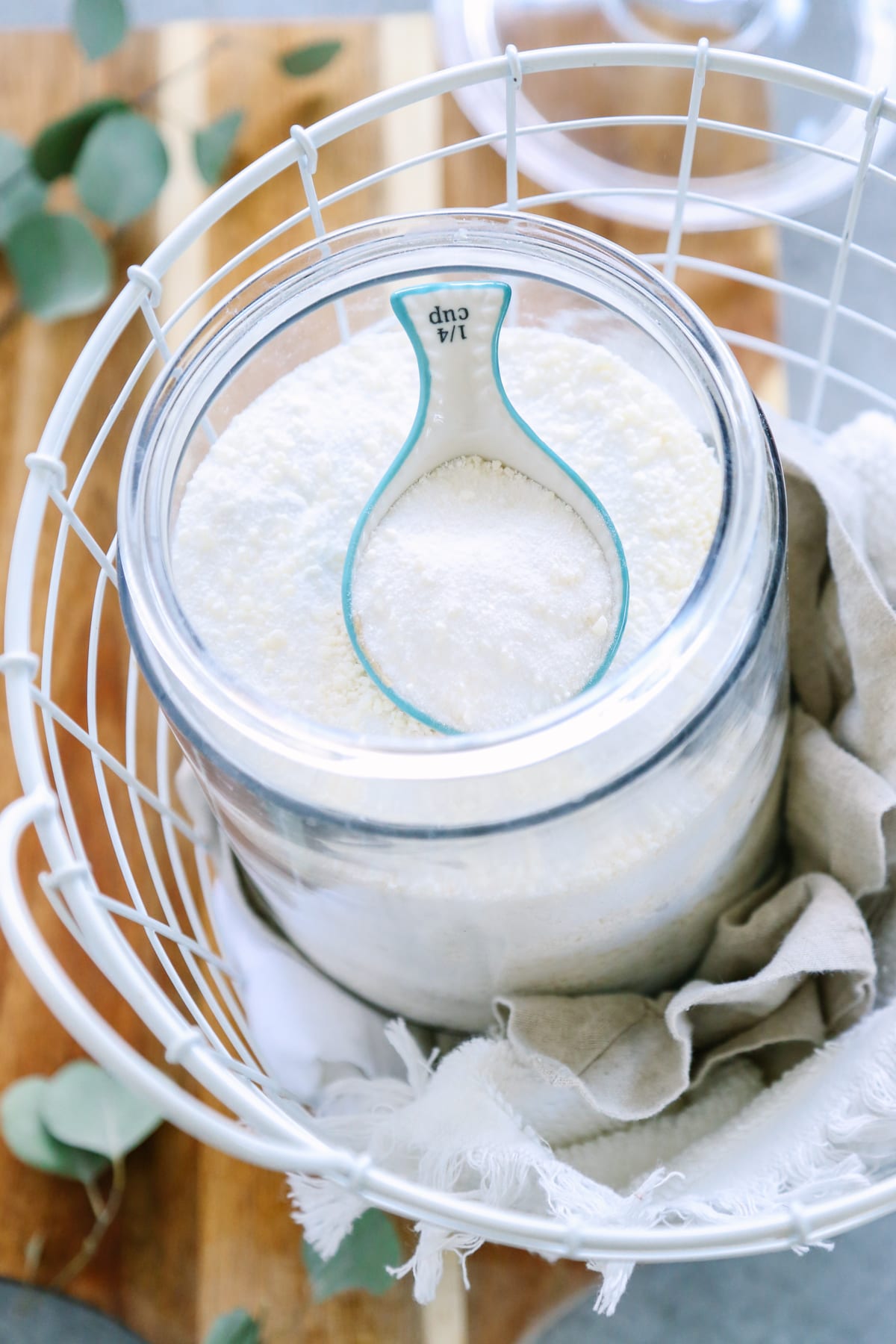
Want to Save This Article?
Enter your email & I’ll send it straight to your inbox. And you’ll get new recipes & tips each week.
I’ve been using this powder laundry detergent recipe and DIY liquid detergent for over 11 years, and my laundry always smells and feels fantastic.
Homemade Powder Laundry Detergent Benefits
- Natural Laundry Soap Recipe – No harsh chemicals in this detergent. You only need 2 bars of natural soap, borax, and washing soda.
- Save Money – Not only is making your detergent a great way to reduce toxic chemicals, it’s also a great way to save money.
- Clean Laundry – The natural ingredients clean clothes, eliminate odors, and even remove tough stains.
- Quick & Easy – This recipe takes about 5 minutes to make.
- 56 Loads of Laundry – Plenty of detergent for a family.
- 12-Month Shelf Life – Store the detergent in a container for up to a year.
Before You Get Started: What You’ll Need
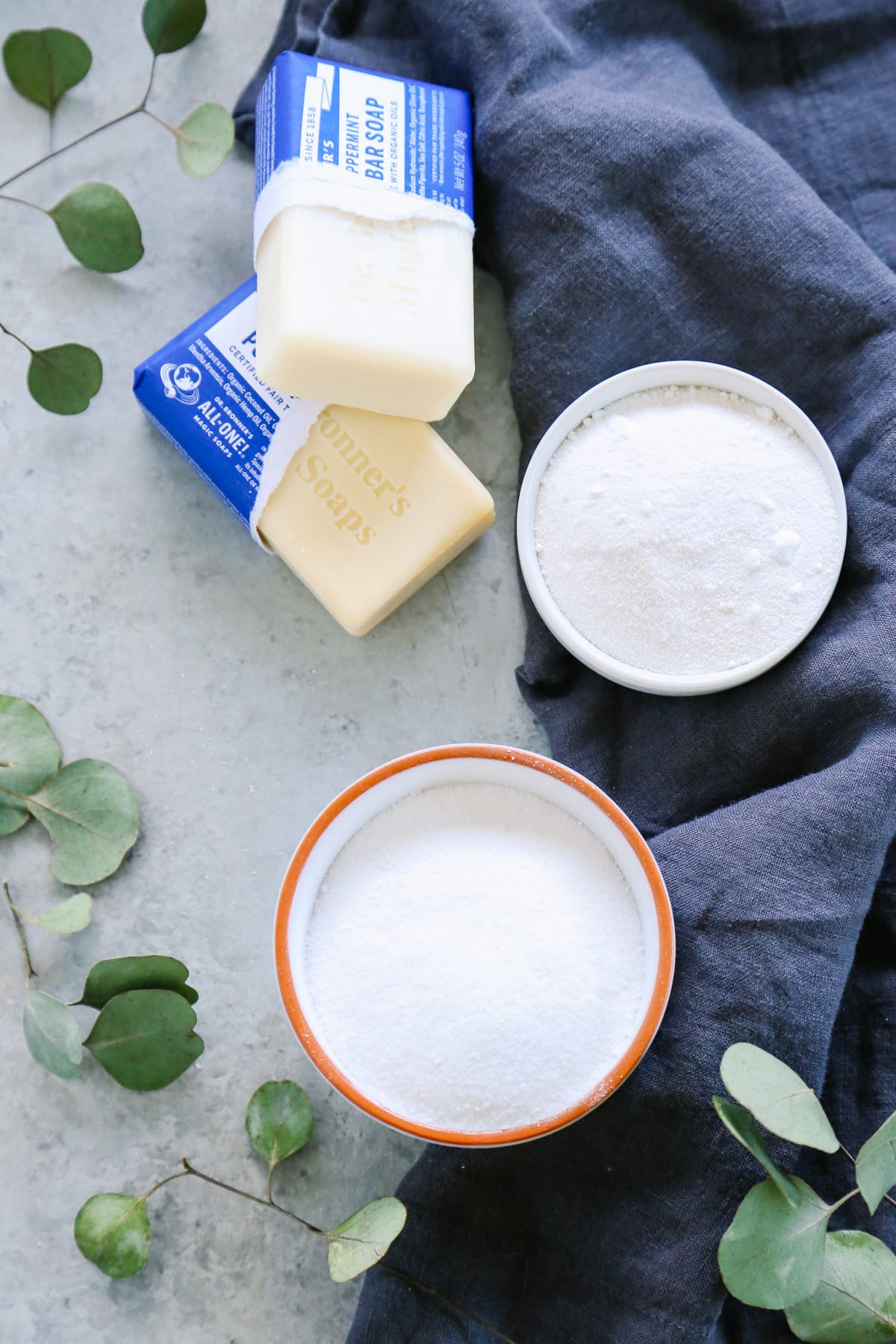
Ingredients
- 2 5-oz castile soap bars – Cleans, removes dirt and grime, fights against stains, and freshens. Castile soap is a plant-based, concentrated soap. It’s the best option for making your own laundry detergent. Dr. Bronner’s brand is easy to find in the grocery store (body/beauty aisle) and has over 20 uses. I also use castile soap to make liquid laundry detergent.
- 3 cups washing soda – Boosts the power and effectiveness of the soap, helping to remove stains and eliminate odors. Also called “soda ash.”
- 2 cups borax – Laundry softener and water conditioner. Boosts the cleaning power of the soap, removes odors, and fights tough stains.
- 30 drops essential oil of choice (Optional) – For a subtle scent. My favorite essential oils for homemade laundry soap are orange, lemon, eucalyptus, lavender, and peppermint. (How to use essential oils for natural cleaning)
Equipment
- Food Processor – To grate the castile soap bars. Alternatively, use a cheese grater and a large bowl.
- Storage Container – Choose a storage container holding at least 6 cups of dry powder.
How to Make Laundry Powder Detergent: Recipe Steps
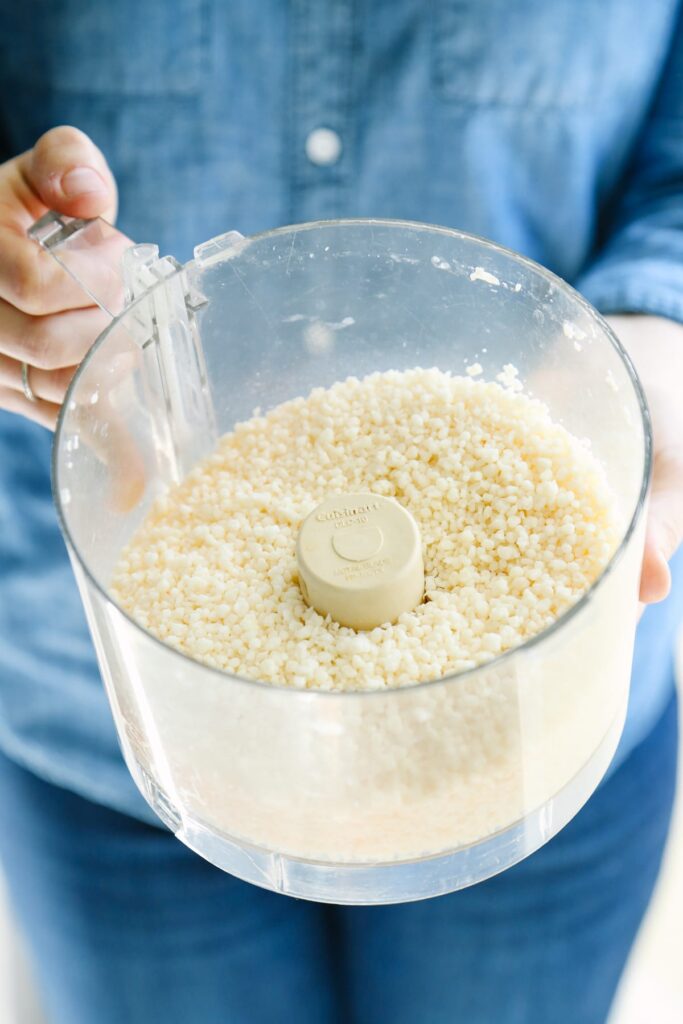
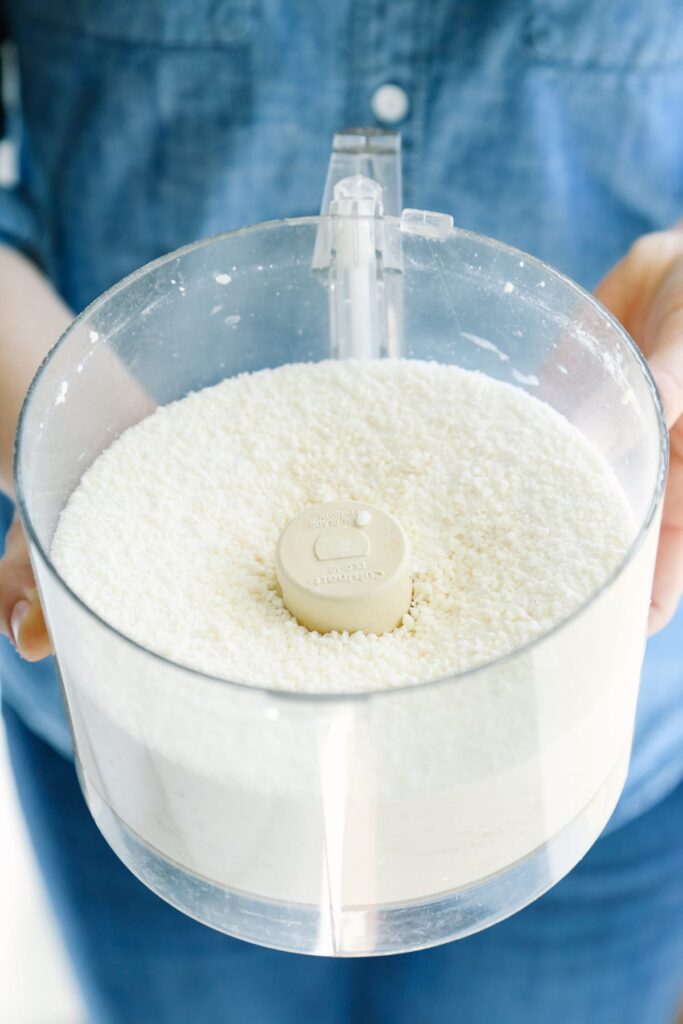
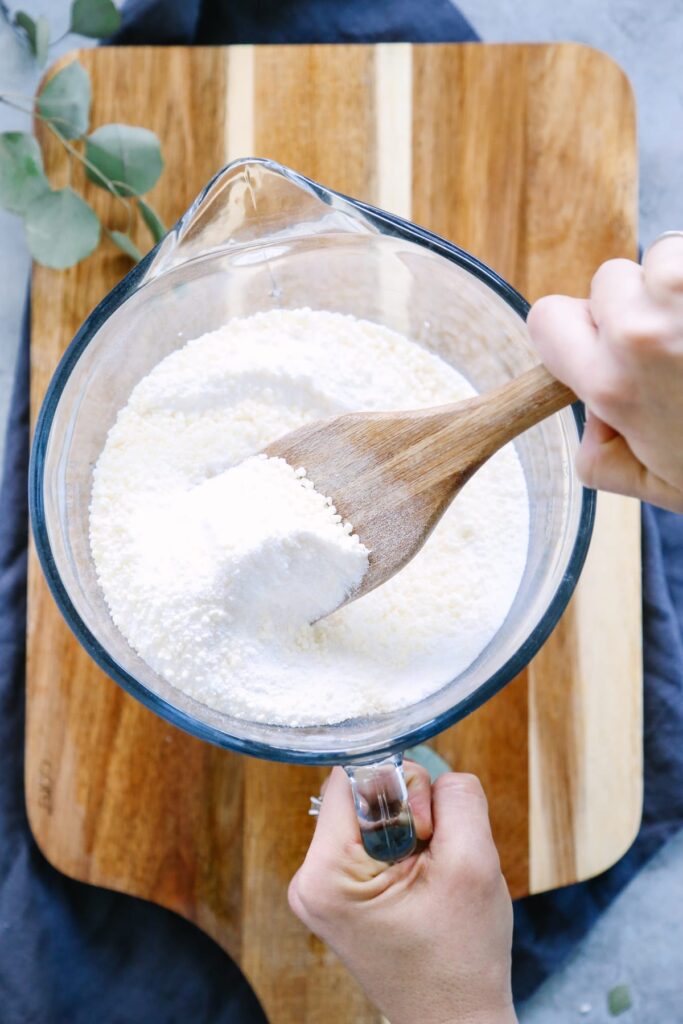

- Step 1 Cut & Grate Soap Bars – Cut the castile soap bars into small slices or chunks using a sharp chef’s knife and cutting board. Place the castile soap pieces in the food processor bowl. Pulse the soap on high until the soap resembles large crumbs (about 1 minute). If you don’t have a food processor, use a cheese grater and a large bowl.
- Step 2 Add Washing Soda & Pulse – Add 3 cups of washing soda to the food processor. Place a towel over the top of the food processor lid and pulse for 1 minute. After pulsing, the ingredients should be well combined. If you don’t have a food processor, stir the washing soda with the grated soap in a large bowl.
- Step 3 Pour Into Storage Container & Add Borax – Pour the combined washing soda and grated soap into a storage container, stir in 2 cups of borax (or seal the lid on the container after adding the borax and shake the container to combine).
- Step 4 Add Fragrance – If desired, add your favorite essential oil or a couple of essential oils to create a custom scent blend. Stir to combine (or shake the container with the lid on).
The detergent is now ready to use. Read on to learn how to use the detergent for the freshest, cleanest laundry.
Watch & Follow My Recipe Video Tutorial
How to Use DIY Laundry Detergent For Top Loaders, Front Loaders, & HE Machines
- For Top-Load Washing Machines – Add ⅛ cup of laundry powder per load directly to the washer basin/drum, then add linens or clothes. Close the lid on the washer and turn on the wash cycle of choice.
- For Front-Loaders and High-Efficiency Washing Machines – Add 1 tablespoon of laundry powder per load to the washer basin/drum, then add linens or clothes. Close the lid on the washer and turn on the wash cycle of choice.
- Adding Fabric Softener – If you want to use fabric softener, add the liquid softener (vinegar is a great option) to the softener compartment of the washing machine. If you’re using a powder softener (like this salt fabric softener), add the powder (and homemade soap) directly to the washer basin/drum, then add fabrics and wash.
What Temperature Water Should I Use?
- Cold Water Setting is Best – Most laundry detergents and soaps require water that is at least 60 degrees Fahrenheit to work (this is true for both homemade and conventional laundry detergents). The good news is that when you use the cold water setting in your washer, it’s usually a mix of hot and cold water. Hence, the water temperature reaches the ideal 60 degrees needed for a detergent to work correctly. For this reason, you can use the cold water setting without issue for both my liquid soap and this powder recipe.
- Colored Fabrics – The cold water setting is always best for colored fabrics.
- Sanitize Sheets & Towels – If you’d like to sanitize sheets, towels, and bed linens, use this laundry powder and the hot water setting.
Storage & Shelf Life
- Store the powder for up to 12 months in a sealed container.
- Store at room temperature.

How to Prevent Soap Residue on Clothes
- Avoid The Laundry Soap Dispenser – Add powder laundry detergent directly to the washing machine basin/drum. Do NOT add the powder to the laundry soap dispenser. Adding the clothes directly to the washing machine and then adding the clothes on top will ensure that water reaches the powder and dissolves it without getting caught in the folds of clothing and linens, which can leave a residue on clothing.
- Try the Laundry Soap Dispenser in Certain Machines- Every washing machine differs. If adding the powder directly to the wash basin/drum isn’t working, try adding the laundry soap to the dispenser. Some machines have a small drawer where you can move from liquid to powder, which is specifically made to help circulate the powder during the wash cycle.
- Soften Hard Water – Castile soap can leave a residue on dark fabrics if you have hard water, even after trying the tricks above. The borax in the recipe helps to soften water and should eliminate residue issues. The case may be hard water if you still have soap residue issues. You can try using an additional water softener (like white vinegar or a salt solution).
Best Essential Oil Blends For a Clean Scent
The best part about this recipe is that you can customize it to create your scent. Essential oils, a natural fragrance, offer a lovely, clean scent without the harsh chemicals and scent additives.
Here are a few of my favorite essential oil combos to create various scents (use 15 drops of each). Of course, you can also use individual essential oils, like lavender, orange, or lemon to create a fresh scent.
- Orange & Lemon
- Eucalyptus & Lemon
- Peppermint & Orange
- Rosemary & Peppermint
- Learn how to use essential oils and make homemade cleaners in this article. And listen to my in-depth podcast about using essential oils safely in the home.
Recipe FAQs
- Can I use the fels-naptha bar instead of the castile soap bar? Yes, you can. Use 2 bars fels naptha bars, grate in the food processor (or use a cheese grater and bowl), then add the remaining ingredients.
- Can I use an ivory soap bar instead of the castile soap? Yes, some recipes online use ivory soap bars instead of castile soap. I haven’t tried this substitution option, but you can test it.
- Can I use baking soda instead of washing soda? No, baking soda and washing soda have two different chemical compositions. You’ll need to use washing soda to make the best product. Washing soda is also called soda ash (source).
- Is it safe to use the same food processor used to make food to grate the soap? Yes, it is. Just wash the food processor well with soap and water after use.
- Does this recipe work with hard water? Yes, it does. See my tips above under “How to Prevent Soap Residue on Clothes” to learn more about hard water and this detergent.
- Does this recipe work in a high-efficiency washer? Yes, it does. Add the soap directly to the washer basin/drum, then add clothes and wash. Use 1 tablespoon of powder per load and the cold water setting.
- Can I make this recipe without borax? For a borax-free laundry powder, make this recipe.

The Best Natural Laundry Detergent Brands: I’ve researched and tried many different laundry soap brands and narrowed down the best 11 brands!
More Natural Products For Clean Laundry
- Stain Remover Spray – Remove tough stains with this simple formula made with castile soap, hydrogen peroxide, and lemon essential oil.
- Wool Dryer Balls – Soften laundry naturally with these easy-to-make wool dryer balls—a great alternative to dryer sheets. Add a few drops of essential oils to boost the scent in the dryer.
- Liquid Laundry Detergent – Combine castile soap, borax, washing soda, and water to make my popular liquid laundry soap.
- Powder Laundry Detergent – Make a powder variation of my popular liquid laundry soap using this simple recipe.
- Laundry Softener – Use vinegar to make this simple liquid laundry detergent.

DIY Homemade Powder Laundry Detergent Recipe
Equipment
- 1 food processor or use a cheese grater and large bowl
- 1 storage container with lid that holds at least 6 cups of dry powder
Ingredients
- 2-5 oz lavender castile soap bars any scent variety or unscented
- 3 cups washing soda also called "soda ash"
- 2 cups borax see notes below for a borax-free recipe
- 30 drops essential oil optional for scent, such as: lavender, peppermint, orange, or lemon
Instructions
- Cut & Grate Soap Bars – Cut the castile soap bars into small slices or chunks using a sharp chef's knife and cutting board. Place the castile soap pieces in the food processor bowl. Pulse the soap on high until the soap resembles large crumbs (about 1 minute). If you don't have a food processor, use a cheese grater and a large bowl.
- Add Washing Soda & Pulse – Add 3 cups of washing soda to the food processor. Place a towel over the top of the food processor lid and pulse for 1 minute. After pulsing, the ingredients should be well combined. If you don't have a food processor, stir the washing soda with the grated soap in a large bowl.
- Pour Into Storage Container & Add Borax – Pour the combined washing soda and grated soap into a storage container, stir in 2 cups of borax (or seal the lid on the container after adding the borax and shake the container to combine).
- Add Fragrance – If desired, add your favorite essential oil or a couple of essential oils to create a custom scent blend. Stir to combine (or shake the container with the lid on).
- The recipe is now ready to use.
Storage:
- Store in a container with a lid for up to 12 months at room temperature.
How to Use:
- For Top-Load Washing Machines – Add ⅛ cup of laundry powder per load directly to the washer basin/drum, then add linens or clothes. Close the lid on the washer and turn on the wash cycle of choice. For Front-Loaders and High-
- Efficiency Washing Machines – Add 1 tablespoon of laundry powder per load to the washer basin/drum, then add linens or clothes. Close the lid on the washer and turn on the wash cycle of choice.
- Pre-Treat Tough Stains – Before washing garments with tough stains, pre-treat the item with my stain remover spray. Then wash with this detergent.
Video
Notes
- For a borax-free laundry powder, make this laundry detergent recipe.
- For more homemade laundry recipes, check out my guide: How to Go Natural in the Laundry Room.

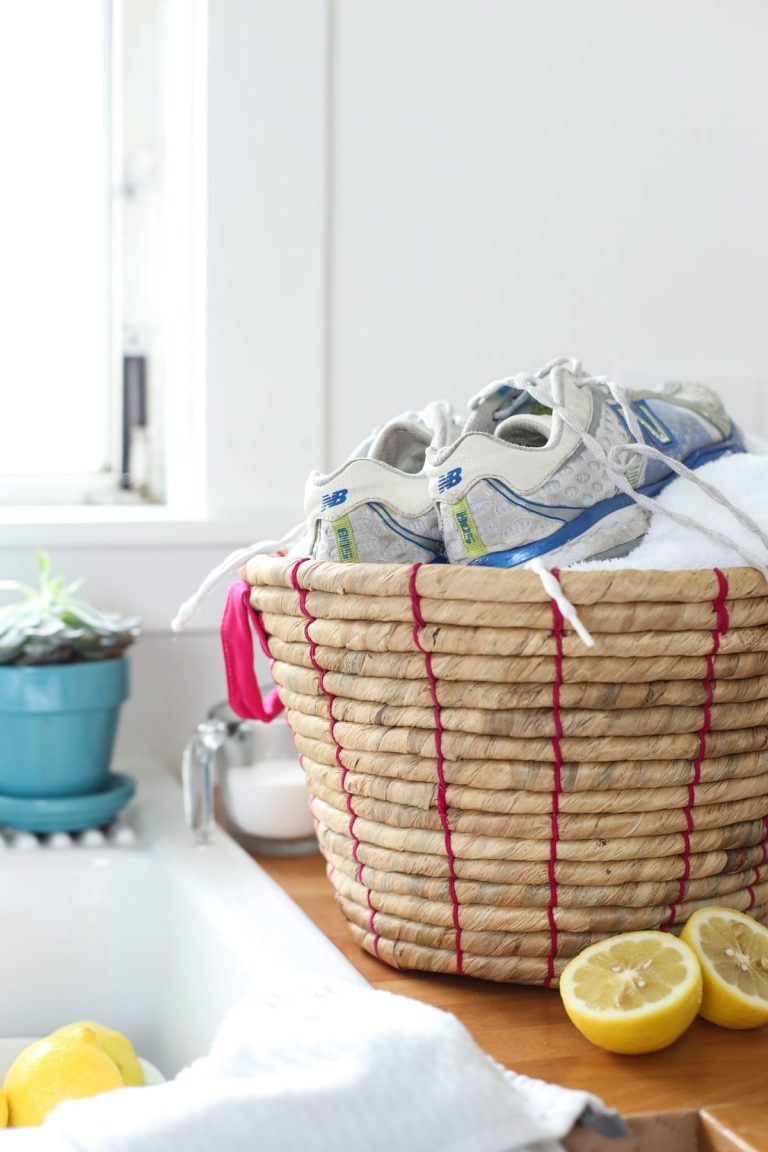
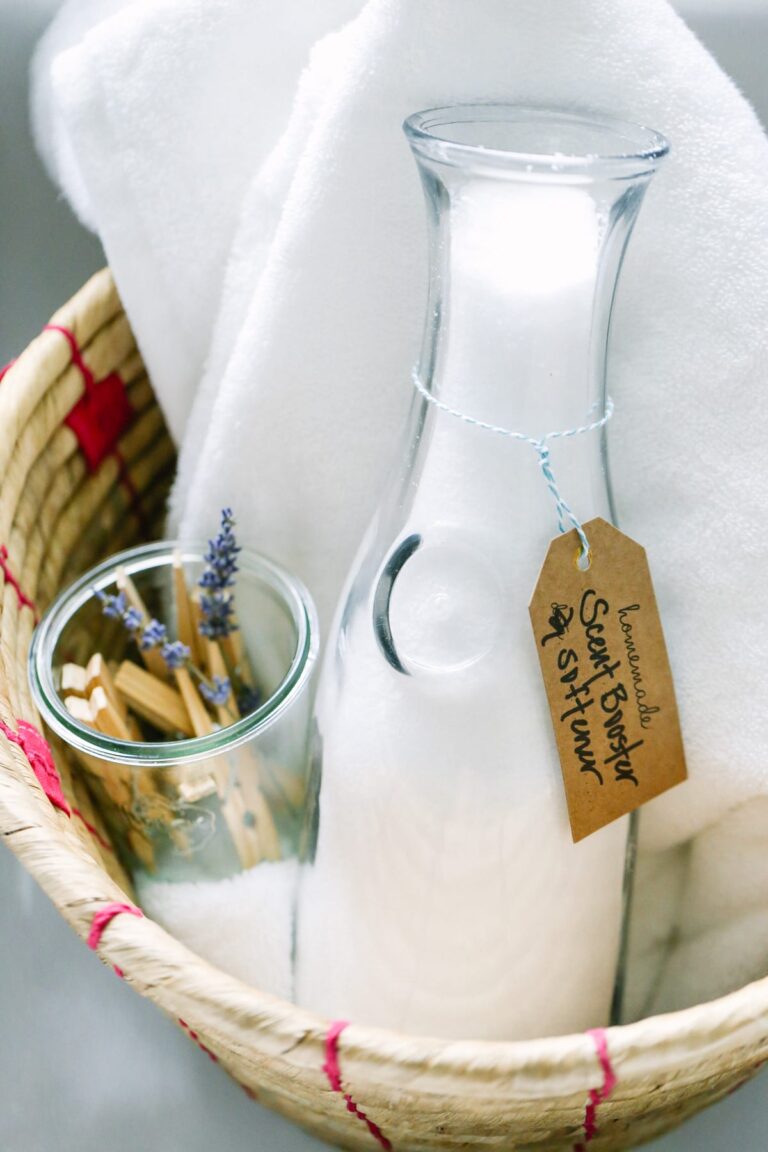
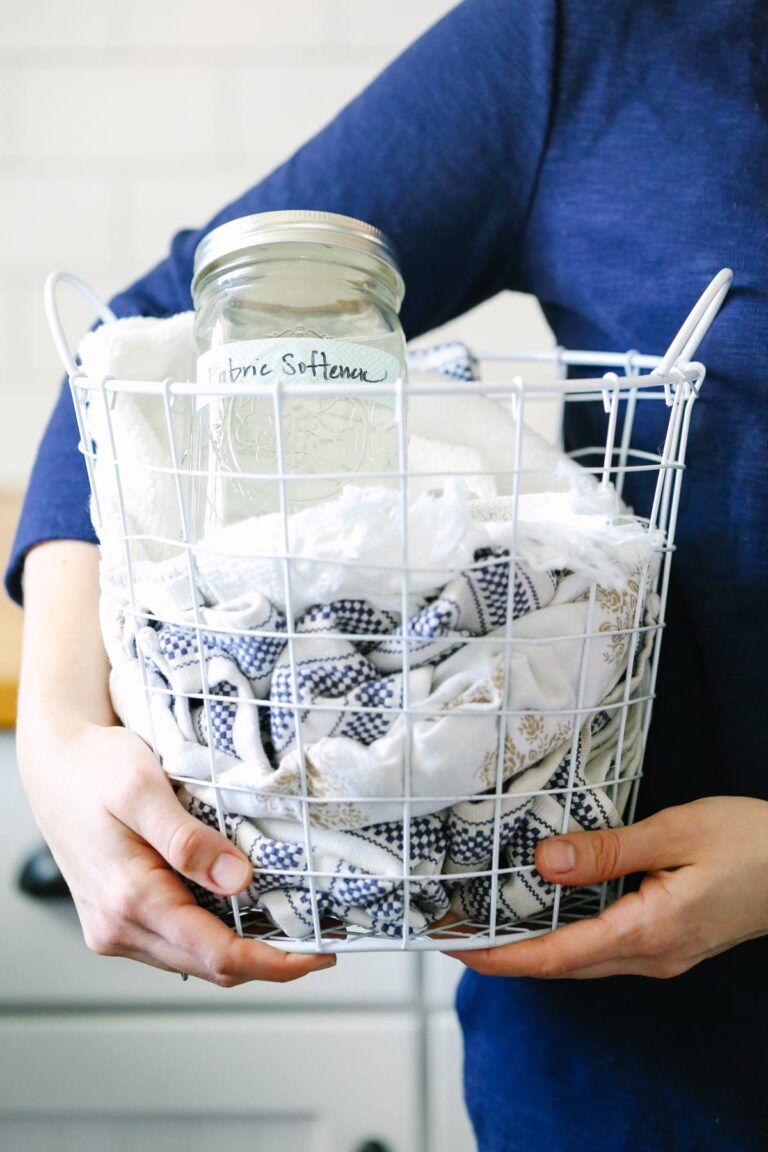
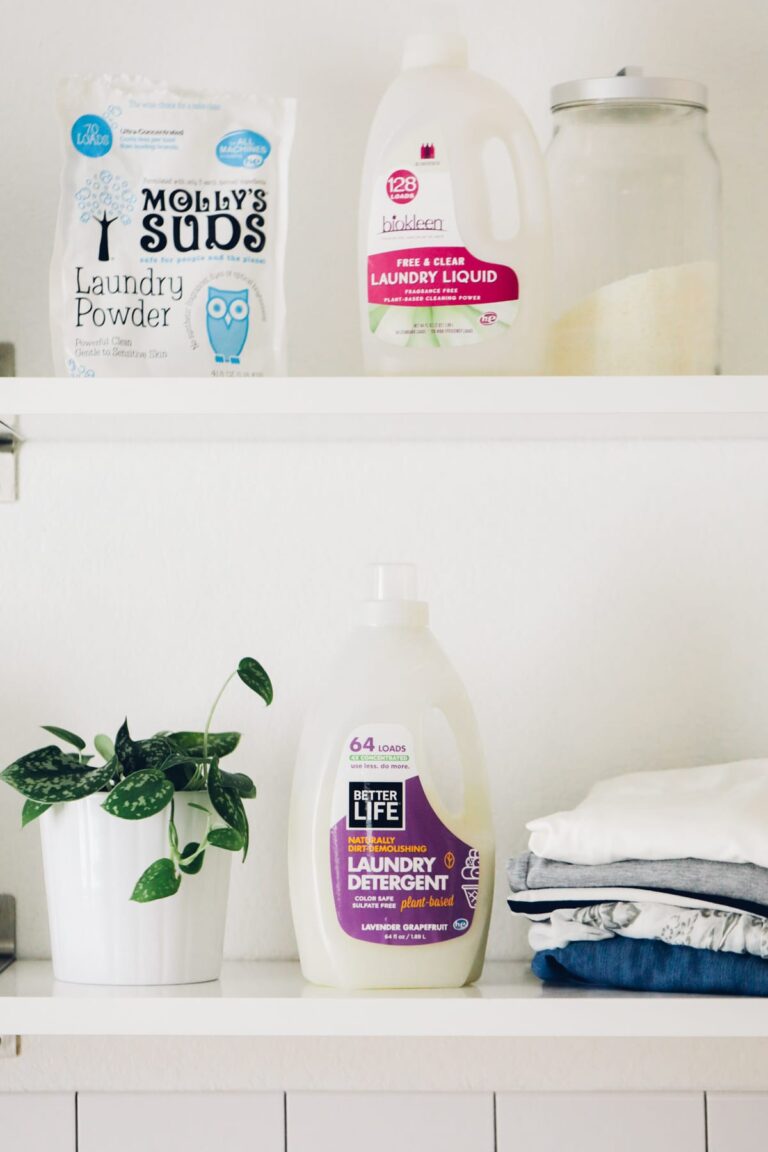
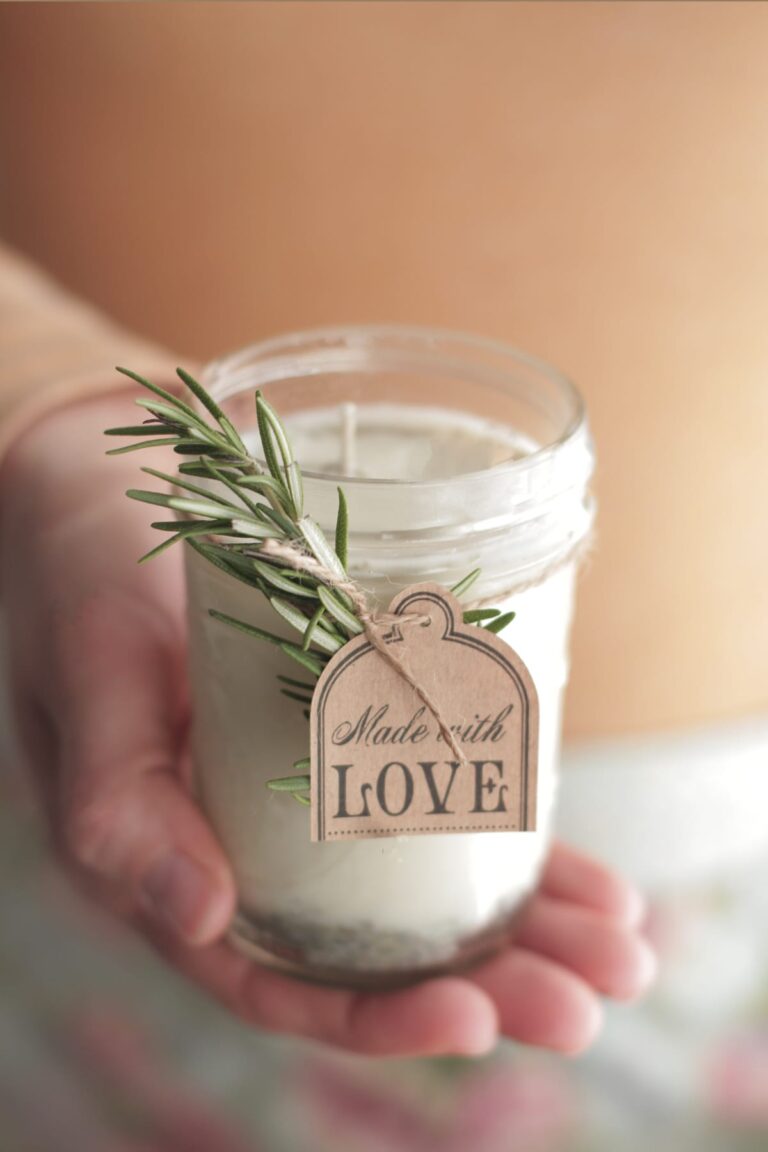
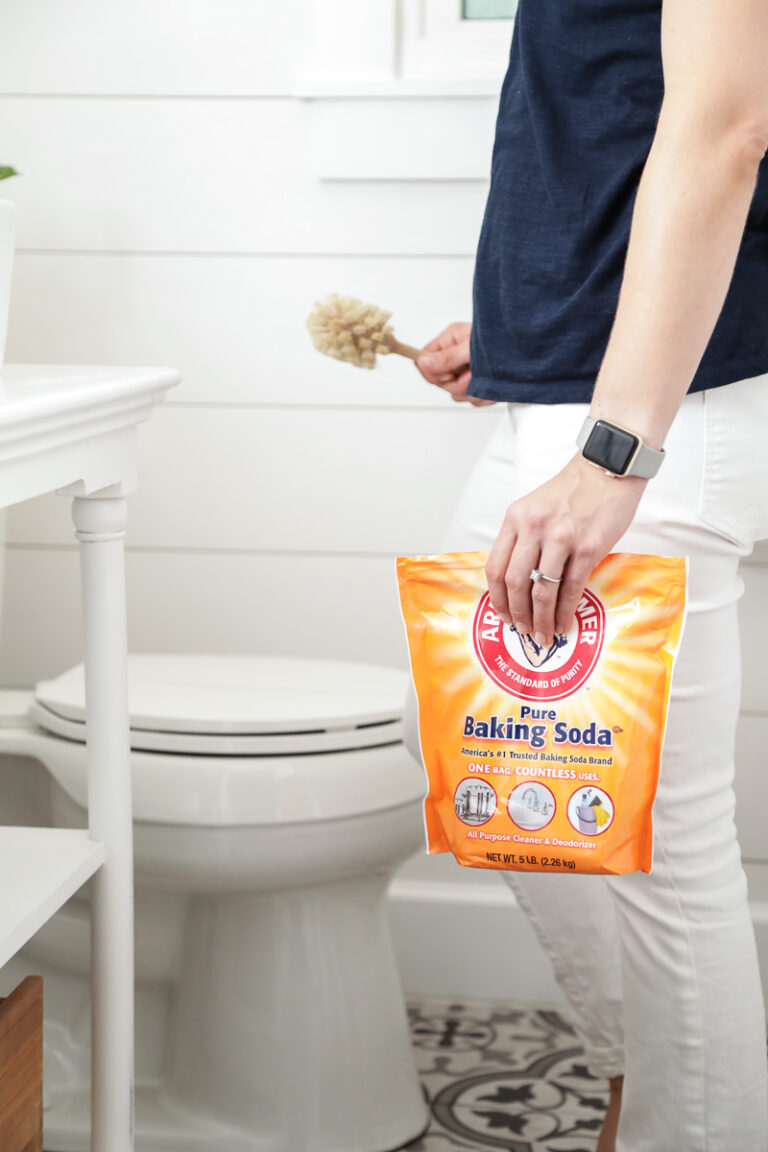
Let me know what you think! I love using this powder laundry detergent as a natural option.
Hi. I really like your powdered detergent recipe but not in favor of using use palm oil because of deforestation. Can I substitute a Castile soap that is palm oil free?
Hey Simona, You could.
I know Dr. Bronner’s and other castile soap companies are very particular in how they source their ingredients. It’s all disclosed on their website.
Hello
Thank you for the lovely recipe, I’ll try it instead of the one I’ve been using.
I have to ask, where did you get this gorgeous ceramic cup?
Hey Jesse, I believe it’s from Anthrpologie a few years ago.
Thanks!
Does this recipe work well in cold water?
Hey Me, Yes, you can use this in cold water. Although all powder laundry soaps perform at their best in a warm-hot temperature.
Is there a reason to pouring in the borax AFTER the other ingrediants are in the storage container? Can I add it into the processor/bowl & stir? Also, what size container should I use to store the soap mixture in?
Thank you
Hey Lary, It’s to avoid having the borax powder circulating in the air. Borax isn’t something you want to inhale.
Hi Chardea!
I am noticing that by washing with this bio receipt the stains don’t leave as easily while using a normal receipt!
Have you used a surfactant to remove stains easily?
Thank you,
Joana
I would try this:
https://livesimply.me/diy-homemade-stain-remover-clothes-stains/
LS Team
You said this laundry detergent works best in warm and hot water. What do you use to wash cool/cold water fabrics?
I generally don’t wash anything in cold, just warm. You can use this in cold water, but I would dissolve in some warm water first.
LS Team
Hello! I just got the ingredients for this! Is 1/8 cup for a regular sized load? If I’m doing a large load should I use more?
Thank you!
Hi Annette!
Yes you can do that.
LS Team.
Adding trisodium phosphate will power up this formula in a natural way. Very cheap at hardware stores. Google usage recommendations.
Thanks for the recommendation, Elvira. Did you try it with this recipe?
I have recently swapped over to seventh generation for my laundry but my husband has complained that he doesn’t feel his clothes are as clean as before. He does industrial electrical work so his clothes can get pretty dirty, do you have suggestions on which natural options have worked better for dirty clothes? Or if there is a pre soak I could use?
Hi, what size container is needed for this batch of laundry soap powder? Thank you, and thank you for sharing
Hey Sharon, I use a 1/2 gallon container
Love this idea and I mixed up some this Morning!!!!! One Question…Can this be used to wash up the Dinner Dishes? I thought it was posted elsewhere that it could be…Also I am gonna run the hot water from my Sink in some sort of Container and add my powders to it and stir really well so they will dissolve better!!!! Thanks for Sharing!!!! Blessings to You and Your’s!!!
Works well and very economical
Hi Kristin I live in the UK and was wondering how much do 3 cups of washing soda and 2 cups of borax weigh in grams or ounces? Thanks Nia
Thanks! I bought Air Tight containers and can just use a little of each. Figuring out how much of each might take a little math, but it will be less messy for me than mixing it together.
Can I keep all the ingredients separate and mix in the washing machine? I ask, because I would rather use the liquid soap, but not make a liquid detergent ahead of time.
Hey Deborah, You could try. That should work.
I cant get a fragrance when i use essential oil orange after the clothes are dry. Any suggestions. I use a reciepe for softner with water vinegar and baking soda and 20 drops of the orange essential oil. HE front loader. I use a scentless natural liquid detergent. Thank you☺
Hey Debbie, Most essential oil-based laundry soaps won’t add much perfume scent to clothing (if at all). You could try adding a few drops of essential oil to dry balls before drying the clothes with them. The smell won’t be as long-lasting or apparent as commercial scented formulas, but it will be slightly noticeable.
I’ve heard that washing soda is ok to use every now and then, but that excessive use can actually wear out your clothes faster. What has your experience been with this? Do you use this as an ever day laundry detergent?
Hey Chloe, I use either this or small-company brand that uses the same formulation and haven’t had issues. I do turn certain items inside out (dark colored items, like black jeans). Occasionally I’ll change things up with a liquid detergent.
I used to make liquid detergent and got away from it because life got in the way! I am excited to try this version because it seems so much easier. If I use my food processor can I use it for food afterwards? Is there a special way to clean it?
Hey Lynnette, I’m excited to hear what you think. Since all the ingredients are cleaning ingredients, you can rinse the food processor out with soap. The ingredients will actually help clean it, too. Just rinse it clean afterward :).
Would love to know if anyone has used pure soap flakes? I bought a bag of pure soap flakes at my health food store and I can’t seem to find a recipe that uses this stuff ! Help anyone !
Hey Cathy, Hmm, good question. I would give it a try in this recipe.
Hi! Thank you for your post! Do you know if this will work in HE washers? Thanks!
Hey Caroline, Yes, it does :). You’ll only need 1-2 tablespoons of soap.
Just mixed up my first batches, one unscented and one lavender. Can’t wait to start using it.
I do wonder if with these ingredients, can I still add vinegar to the wash as a natural softener still? Or do you have another natural softener recipe that would work with this recipe?
Hey Michele, You can since there’s so much water in the washing machine, there shouldn’t be any conflict with the ingredients.